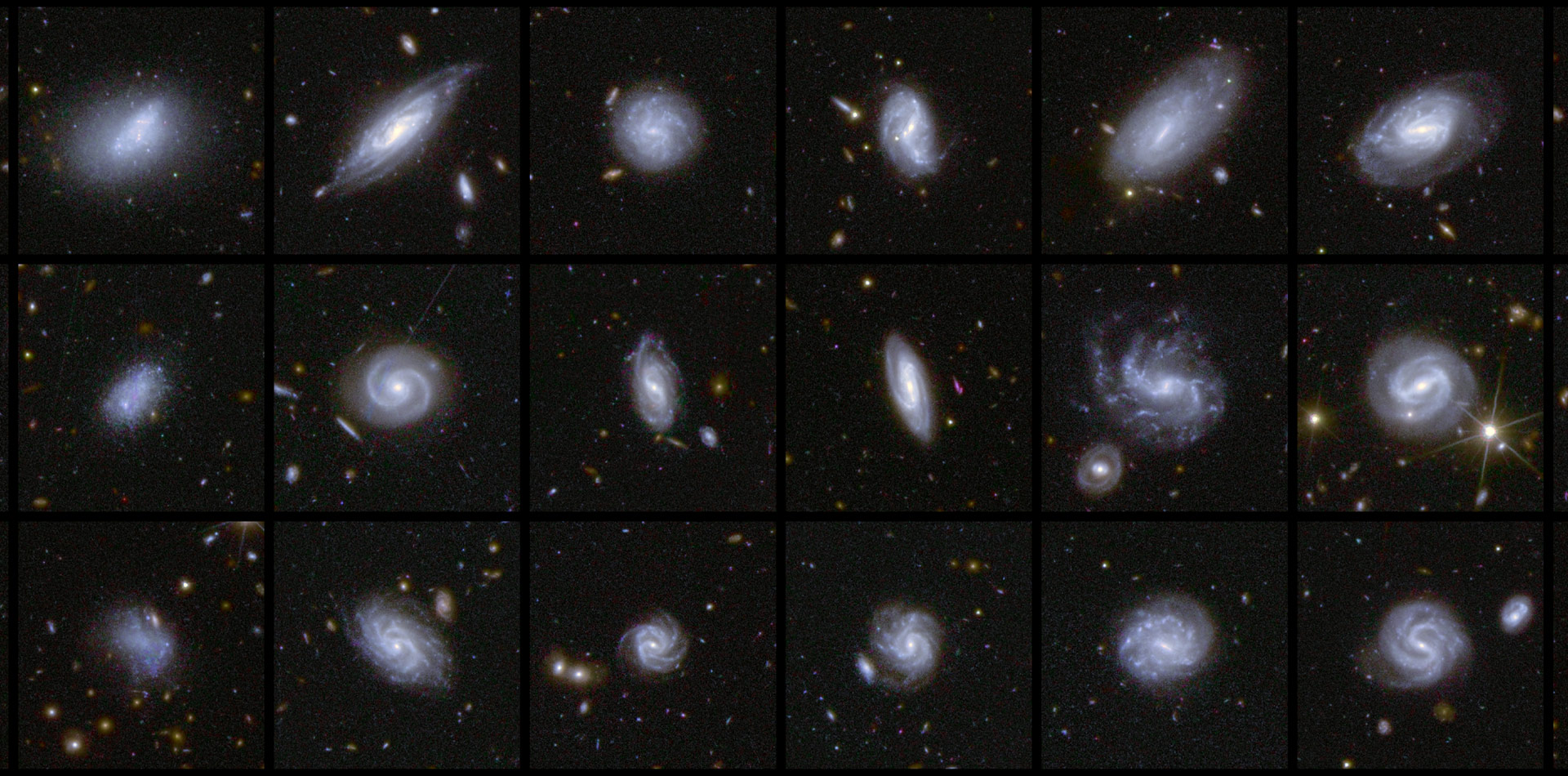Euclid telescope reports first results
Launched on July 1, 2023, the European Space Agency (ESA) space telescope will study the expansion of the universe. Although still in its early stages of operation, the instrument is already yielding a wealth of information. Alain Blanchard, professor at the University of Toulouse’s Institut de recherche en astrophysique et planétologie (IRAP – OMP, CNES/CNRS/Université de Toulouse), is one of the scientists involved in this European project, and highlights the first results obtained, such as the morphology of galaxies and their interactions with their environments.
Euclid is an ESA project that brings together various laboratories and research institutes throughout France and Europe. It aims to understand the expansion of the universe and its possible origin: dark energy. The 1.2-meter-diameter telescope will observe and map billions of galaxies in order to better understand dark energy, which is thought to account for 68% of the universe. Since its launch, the telescope has only made 0.45% of its planned observations, but scientists have already been able to make numerous discoveries about galaxies.
Indeed, astrophysicists have noted that the more massive a galaxy cluster, the more connected it is to the cosmic web, which is the distribution of matter in the universe. But the researchers also noted that the more connections a cluster had to the cosmic web, the more elliptical its galaxies would be. The scientists deduced that this was due to the way they had accumulated matter in their cosmic environment during their formation.
Alain Blanchard, professor at the University of Toulouse’s IRAP – OMP, is involved in this research project, and explains the importance of its initial results.
Euclid’s results have already given us some insight into galaxies, with information on their morphologies and interactions with their environment. What lessons do you draw from these results, and how do you think they will influence future knowledge of the universe?
Current results are peripheral to Euclid’s core objectives. The first cosmological conclusions, for which the mission was designed, will probably come at the end of 2026.
First and foremost, Euclid is a super camera! It can therefore take “large format” images of the sky (wide field) and very sharp images (high resolution). In a single shot, it covers almost twice the size of the moon, thirty times more than the Hubble Space Telescope. Euclid’s first observations exploited this wide-field, high-resolution performance to observe a number of objects already known but never before observed with such a high-performance instrument.
In addition to this camera, there is a second instrument that produces spectra (i.e. the decomposition of light into wavelengths). Spectra allow light to be analyzed as a function of wavelength, in the same way as a prism or drops of water produce a rainbow.

One of the aims of the Euclid project is to study dark energy in greater detail. Do these initial results allow us to refute or imagine new hypotheses?
These initial results have no direct, immediate implications for these objectives. They do, however, demonstrate Euclid’s excellent performance, and are beginning to clarify certain “nuisance” effects that need to be better understood.
Euclid’s objective is to gain a better understanding of dark energy. The two onboard instruments have been designed with this in mind. Euclid will collect images covering 15,000 square degrees, or roughly a third of the sky. In these images, galaxies will be identified, along with their approximate shape, for over a billion of these objects. These images are distorted by “gravitational lensing”, an effect first demonstrated by a team from Toulouse almost forty years ago… This distortion enables us to reconstruct the distribution of matter in the universe.
For 30 million of them, we’ll have a spectrum enabling us to locate them in space, providing a three-dimensional map. This set of data provides detailed information on the distribution of matter and its evolution over the last ten billion years. This evolution depends to a large extent on the characteristics of dark energy, which we can now better understand.
The Euclid project is already reporting a huge number of results even though it’s still in the early stages of observation. What do you expect to discover later?
Dark energy is the name given to the cause of the accelerating expansion of the universe. This acceleration, discovered in the late 1990s, won the Nobel Prize in Physics. It came as a great surprise: at the scale of the universe, the gravitational force manifests itself as a repulsive rather than an attractive force!
The origin of this force is totally unknown. But a simple possibility is that of a “cosmological constant”, a term introduced by Einstein in the equations of general relativity and which was quickly abandoned… But in more complex models, this “constant” could vary over time. This is precisely what the first observations of another project, Dark energy spectroscopic instrument, seem to indicate, even if this signal still seems too weak to be considered a totally convincing indication.
Euclid has exactly what it takes to respond unambiguously to this possibility, and perhaps even in its first year of observation.
Further Resources
- Press Releases
- Euclid Quick Data Release 1 (Euclid Consortium)
- Euclid opens data treasure trove, offers glimpse of deep fields (ESA)
- En images : Euclid dévoile trois mosaïques couvrant une vaste zone du ciel (CNES)
- « Quick-release 1 » : le télescope spatial Euclid dévoile sa première moisson d’images de l’Univers (CNRS INSU)
- Le télescope Euclid rapporte ses premiers résultats (University of Toulouse)
IRAP Contact
- Alain Blanchard, alain.blanchard@irap.omp.eu






